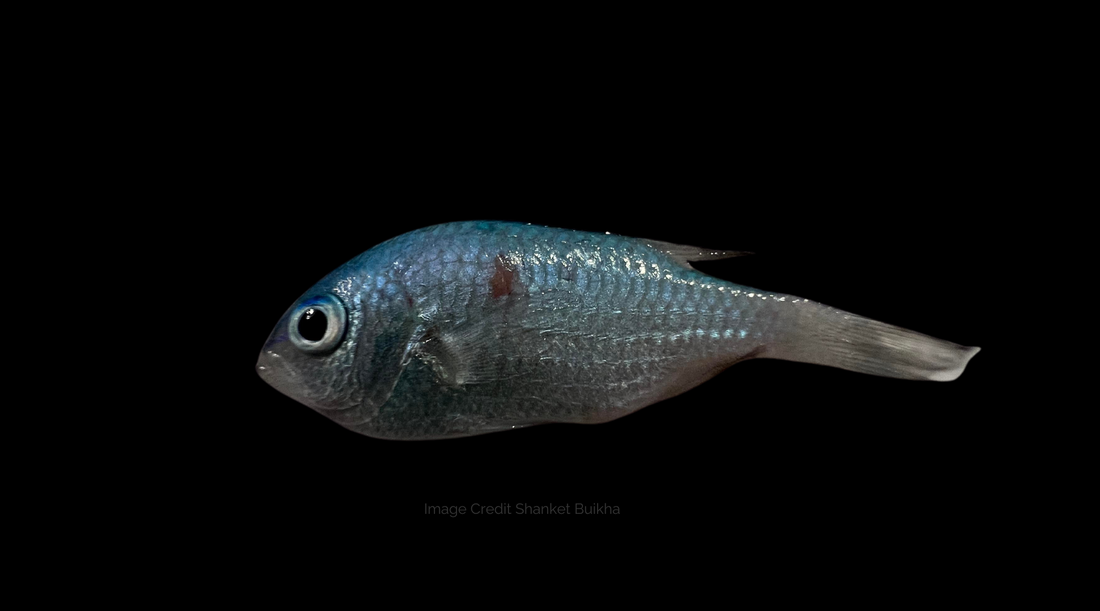Marine aquarists, whether hobbyists or professionals, are often confronted with various challenges that can affect the health and well-being of their aquatic livestock. Among the most concerning issues is the presence of parasitic infections, particularly those caused by Uronema – a deadly and fast-acting ciliate protozoan.
What is Uronema?
Uronema is a genus of free-living ciliates, which typically thrive in marine and brackish water environments. In the aquarium trade, this parasite is notorious for attacking fish, often leading to devastating outcomes if left untreated. The species most commonly associated with infections in marine aquariums is Uronema marinum. It’s particularly dangerous because of its ability to rapidly infect and damage the host fish, sometimes leading to death within a few days.
Unlike many other parasites, Uronema does not need a fish host to survive. It can thrive in poor water conditions, especially those with high organic loads, making its prevention and treatment more challenging.
How Does Uronema Spread?
Uronema often spreads through open wounds or areas of damaged tissue on the fish, although it can also invade healthy fish, particularly those under stress. Common causes of stress include sudden changes in water temperature, poor water quality, and overcrowding. Since Uronema can exist in the water column, even a minor lapse in tank maintenance can lead to an outbreak.
Fish that are commonly affected include clownfish, tangs, damsels, and other stressed or weakened species. It’s important to note that while Uronema is more prevalent in certain species, no fish is entirely immune to it if conditions are favorable for the parasite.
Symptoms of Uronema Infection
Recognizing the signs of a Uronema infection is crucial for early intervention. Some common symptoms include:
- Rapid breathing or gasping: As the parasite infects the fish's gills, it impairs oxygen exchange, causing the fish to breathe heavily.
- Lesions and ulcers: Red sores, ulcers, or open wounds, particularly along the flanks and near the head.
- Erratic swimming: Infected fish may swim erratically or exhibit loss of coordination.
- Lethargy: Affected fish often become lethargic and may hide or remain near the bottom of the tank.
- Cloudy eyes: Eye infections can occur, often leading to blindness if untreated.
Prevention: Keeping Uronema at Bay
- Water Quality: Maintaining excellent water quality is the first line of defense. Regular water changes, monitoring ammonia, nitrite, and nitrate levels, and ensuring adequate filtration are all essential.
- Quarantine New Arrivals: Quarantining new fish for at least 4-6 weeks can prevent the introduction of Uronema and other pathogens into the display tank. During this time, the fish should be monitored for signs of infection.
- Avoid Stressors: Fish are more susceptible to parasites when stressed. Ensure that tank conditions such as temperature, salinity, and pH are stable and appropriate for the species housed.
- Remove Dead or Dying Fish Immediately: Uronema can rapidly multiply and spread when a fish dies in the tank, as the parasite feeds on decaying tissue.
- Sterilization: UV sterilizers and ozone can help control free-swimming Uronema by killing the parasites in the water column, though these methods won’t eliminate an infection once it’s taken hold in a fish.
Treatment: Addressing a Uronema Outbreak
Treating Uronema infections can be difficult due to the parasite’s resilience and rapid replication rate. Once an outbreak occurs, immediate action is necessary:
- Hospital Tank: Infected fish should be moved to a separate hospital tank to prevent further spread.
- Formalin: Formalin baths or dips (short-term treatments) can be effective in reducing parasite load and eradicating Uronema in fish. These treatments must be carefully administered due to formalin’s toxicity.
- Antibiotics: Secondary bacterial infections are common with Uronema due to the open wounds it creates. Broad-spectrum antibiotics may be necessary to prevent further complications.
- Copper Treatment: Some aquarists have found success using copper-based medications to kill free-swimming Uronema parasites, however, Formalin remains the gold standard. Copper can be harmful to invertebrates and sensitive species, so its use should be carefully considered.
Conclusion:
Uronema represents a serious threat in marine aquariums, especially in systems with poor water quality or high stress levels. The best approach is a preventive one—maintaining stable water conditions, quarantining new arrivals, and minimizing stress for the fish are key to avoiding an outbreak. Should an infection occur, early detection and aggressive treatment are essential for saving affected livestock.
For marine enthusiasts, staying vigilant and proactive about tank conditions will go a long way in keeping Uronema and other parasites at bay, ensuring a healthy and thriving aquarium.

